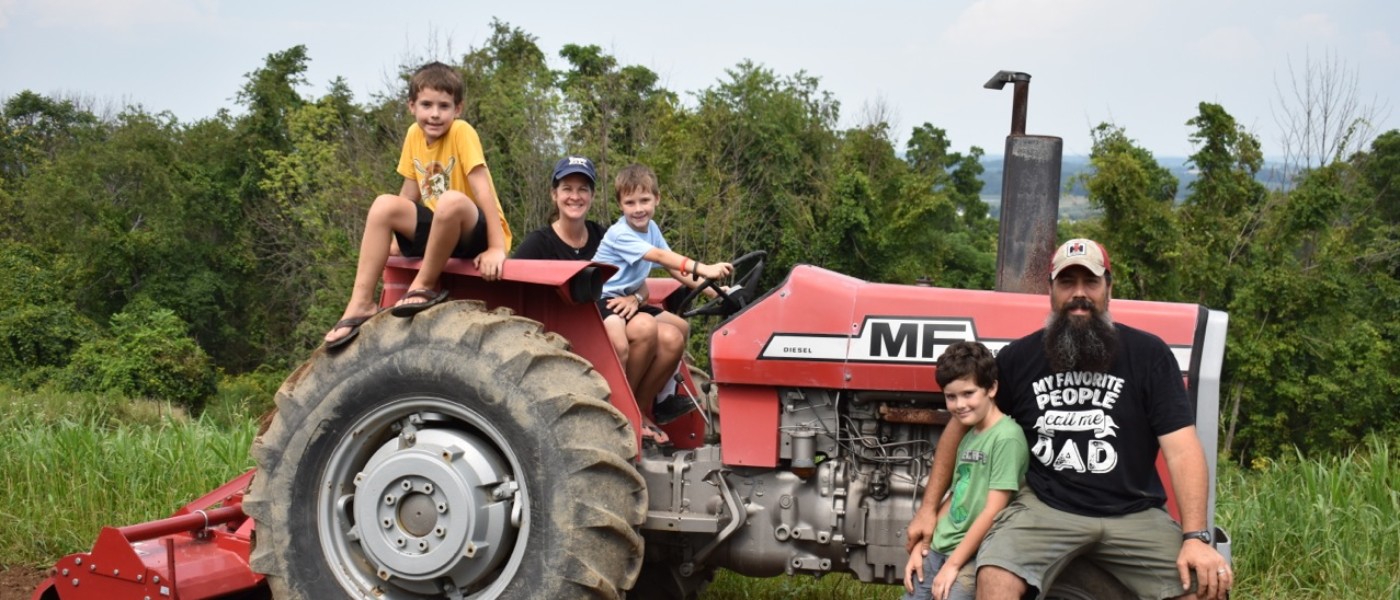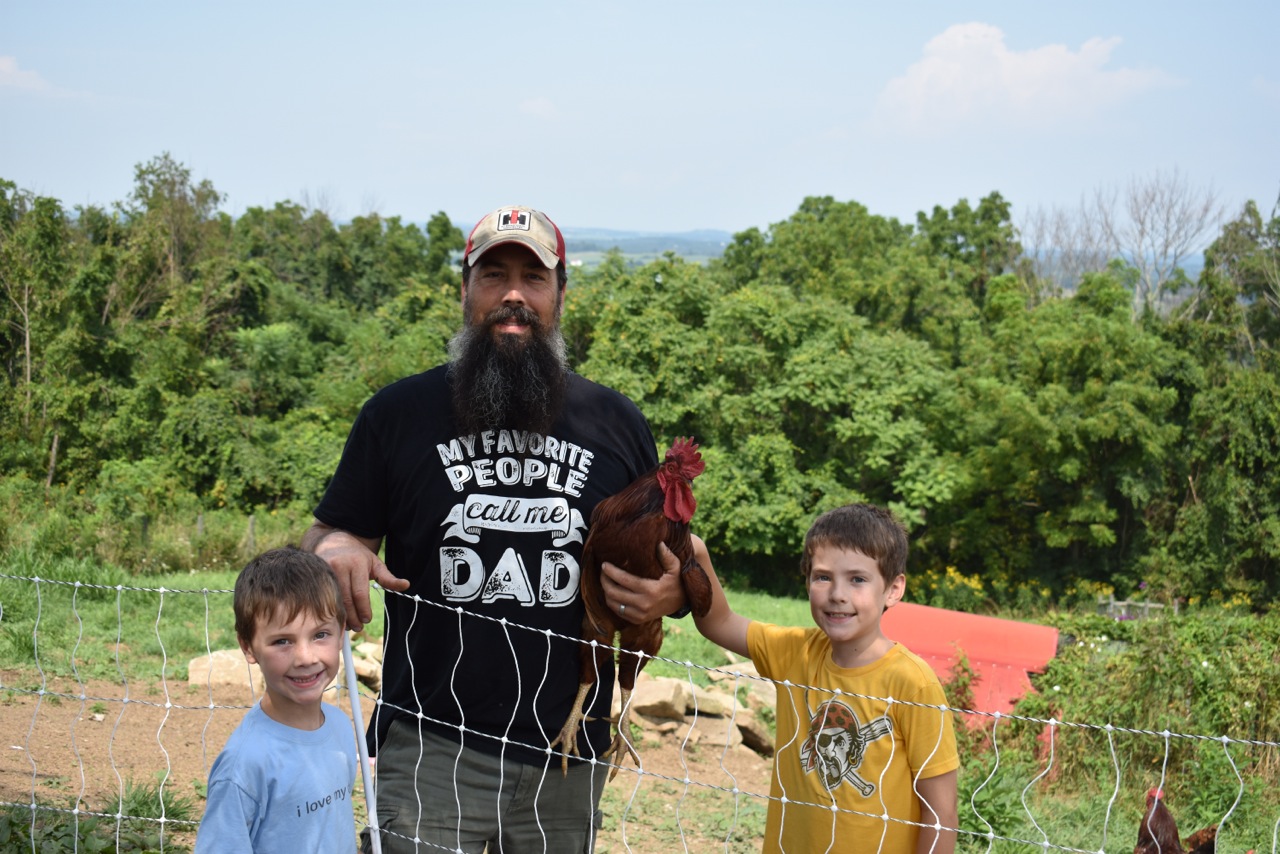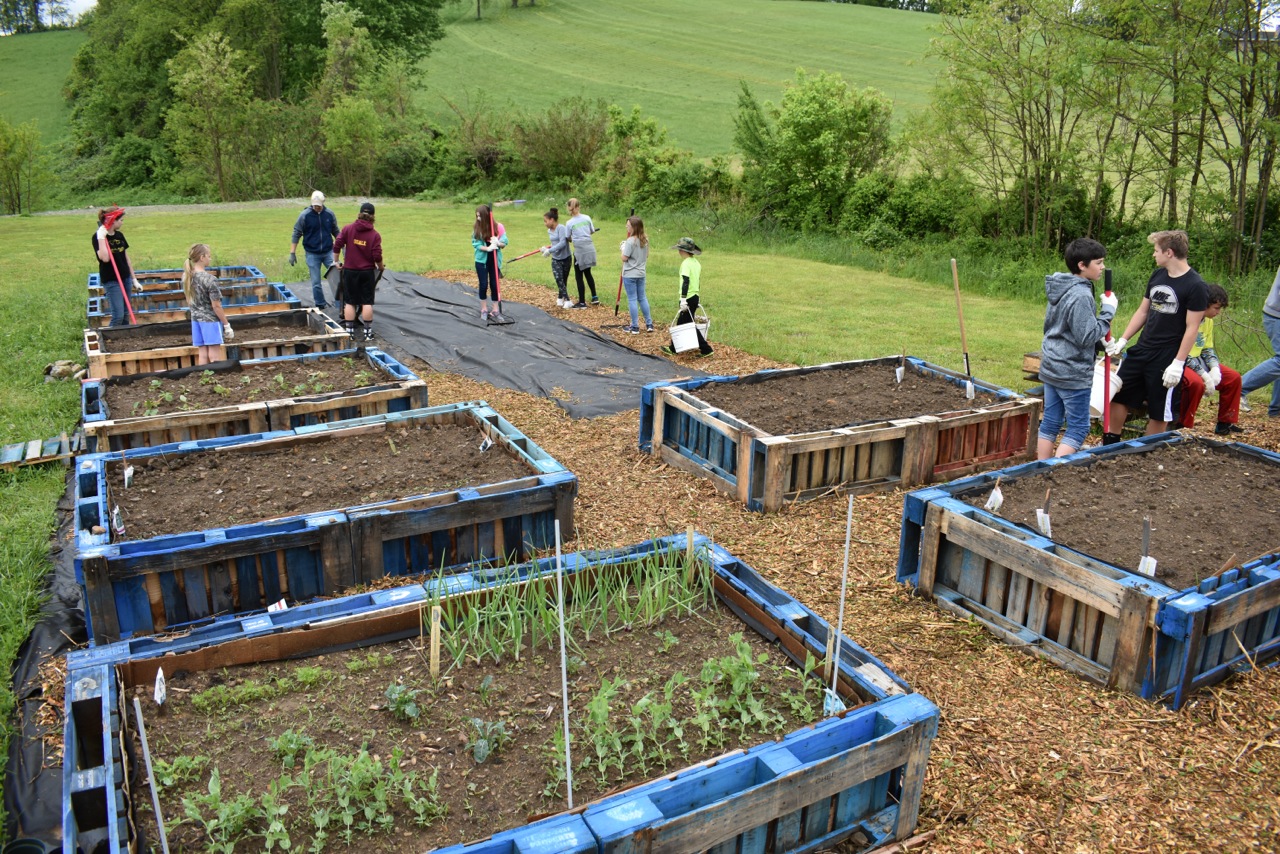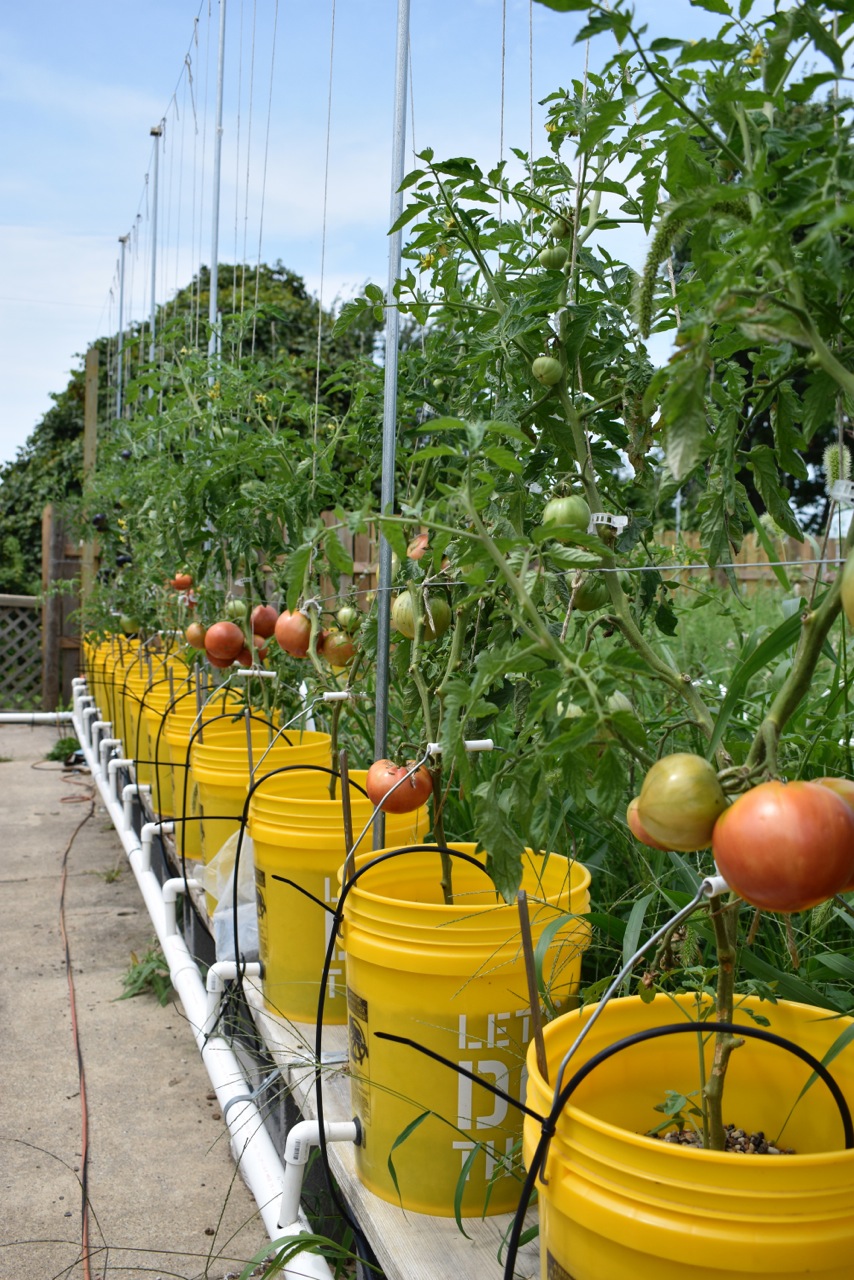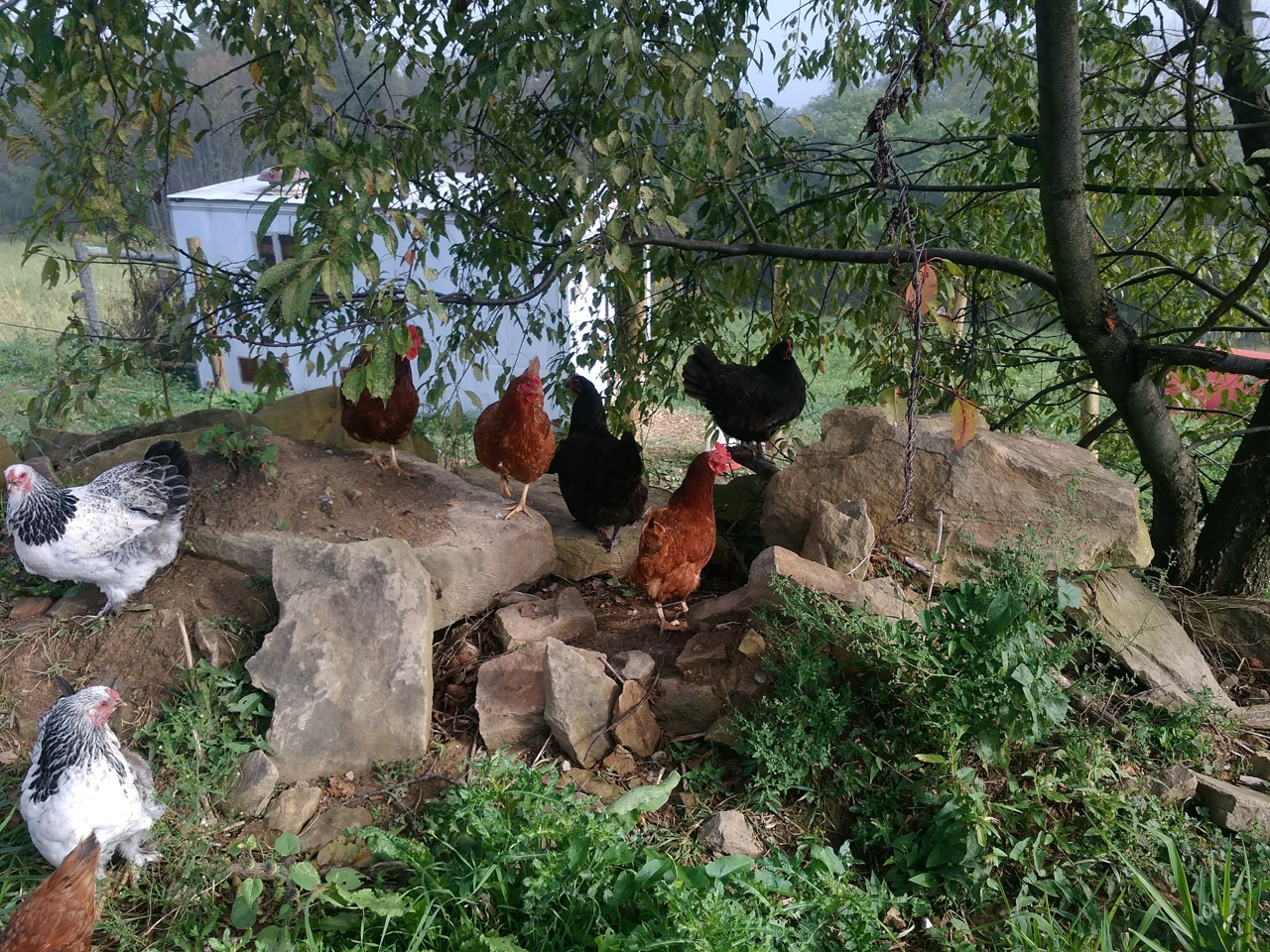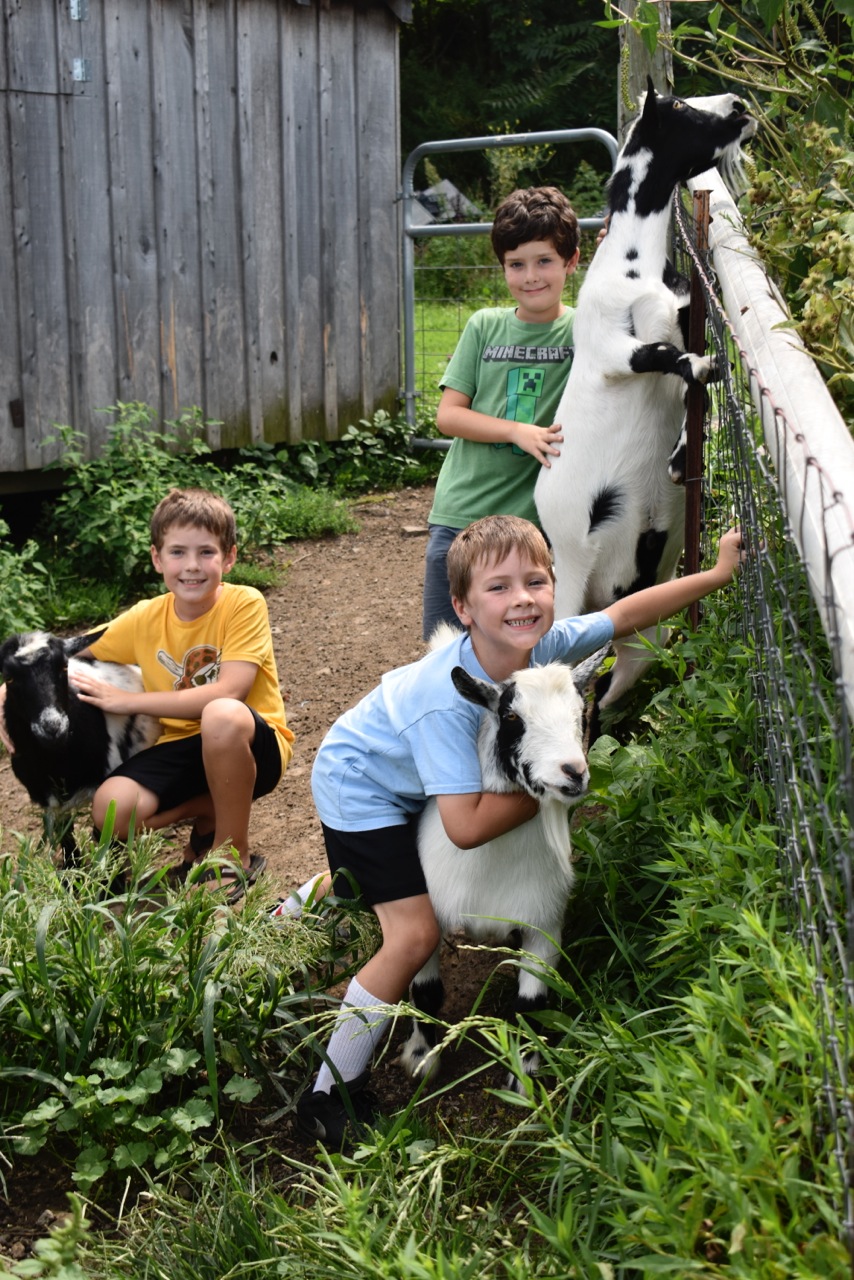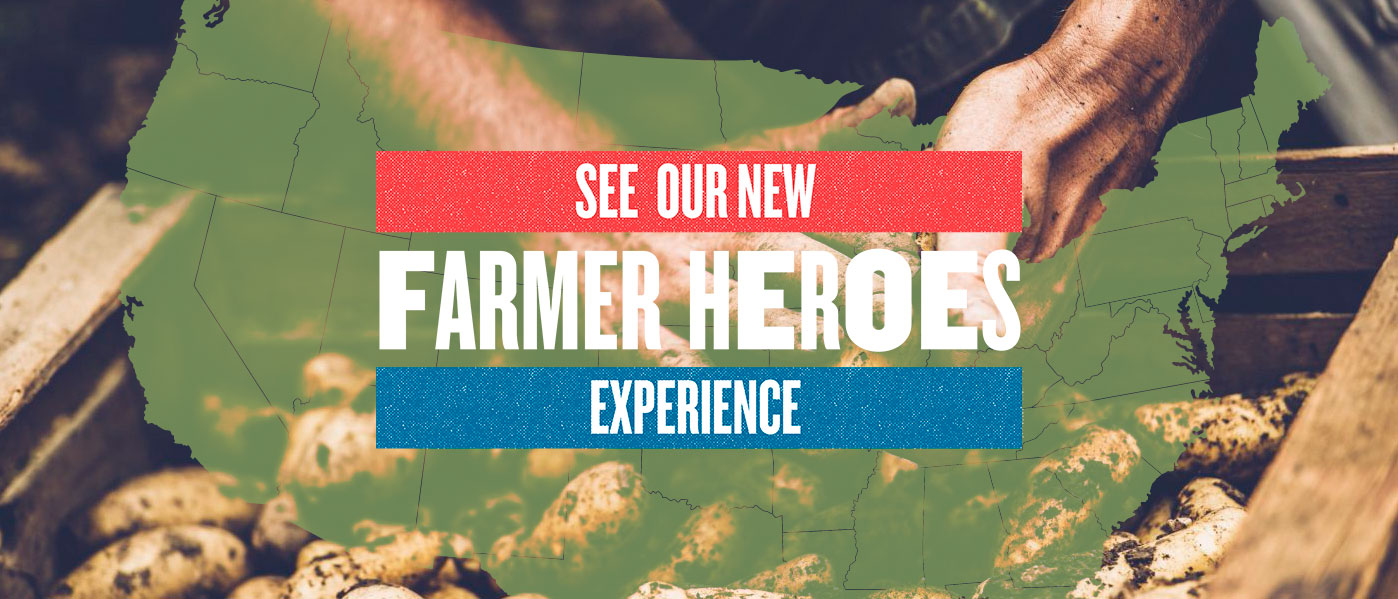During his presidency, George Washington conceptualized an east-west road that would unite the burgeoning country. The result of his efforts was the National Pike, now known as Route 40, along which Brian Allen’s life has unfolded. He spent his “barefoot, playing-in-the-dirt-kind-of childhood” in Lone Pine, Pennsylvania, one of the humble towns that Route 40 passes through on its long traverse.
Like many Keystoners, Brian comes from a family of hard working coal miners and farmers. His grandparents had a two-acre garden that they relied on, a staple for many people born around the time of the Great Depression. “Everybody had one,” he says. “The idea of food sovereignty and providing for yourself was common. It was not unique or trendy. It was part of how you survived.” Brian remembers walking around his grandparents’ fields. “My Grand Pap always carried a pen knife and a salt shaker. We would eat the melons right there in the field. We would eat the peas and the cucumbers on the spot. That probably changed what I thought about food.”
Brian spent fifteen years as a biologist, until he and his wife Kathy decided to settle their family near his hometown. They purchased Scenery Hill Farm, named after the town in which it lies, about a decade ago. It is just off Route 40, a quick ten minutes from Brian’s childhood home. The farm is just thirty acres, but it has plenty of space for their three sons, Liam, Elias and Garrett, to get their feet dirty (and hang out with their goats).
Family is one reason Brian came home to Washington County, but the other is the local agricultural community. He describes it as a “regional movement of like-minded people,” who, like him, are “big proponent[s] of the family farm and changing the food system in the United States.” He says, “I‘m working on changing it on a small scale with my family.” Brian and Kathy grow rotationally grazed, grass-based chickens. Their small operation can support several hundred chickens at a time, rather than the many thousands that factory farms can. He’s proud of the quality of his meat, saying that he doesn’t sell anything that he wouldn’t feed his sons.
“We’re in the middle of the aftermath of the mining industry. Lots of empty towns, lots of lost jobs.”
Last year, Brian noticed that the Greater Washington County Food Bank had relocated to a new space on Route 40 in Brownsville. Because the food bank had gone from “feeding about 1.8 million pounds of food [annually] to 2.7 million pounds in a matter of about two years,” scaling up had become urgent. Washington County has a food insecurity rate of about 11.5 percent—almost 24,000 people. The food insecurity rate for children is almost eighteen percent, while for seniors it’s just over seven percent.[1] The food bank’s work is vital for those in the region who don’t know where their next meal will come from.
In talking about the hard times that have fallen upon his hometown, Brian is straightforward: “We’re in the middle of the aftermath of the mining industry. Lots of empty towns, lots of lost jobs. Unless you drive to Pittsburgh, it’s hard to find a career employment opportunity.” Coal mining was so central to the economy here that the rise of natural gas, which came along to replace it, has been a disruption in all elements of life. Unemployment peaked in Washington County in 2010 when the annual rate reached as high as ten percent.[2] Towns that were recently vibrant have withered away, leaving many feeling lost and powerless. Currently, the food bank serves roughly three and a half percent of Washington County’s population.
Brian had noticed that when they purchased the building, with it came the 25-acre farm that was originally part of the property and a 1900’s barn. It was old farmland that had not been utilized in a long time, other than for haying.
Brian asked why the food bank wasn’t planting the farm and supplying food that way. It would be so wonderful if the food bank could produce their own healthy food, he thought. Happily, Connie Burd, GWCFB’s executive director, was thinking the same thing. She heard about Brian’s interest and followed up with him. “Connie convinced me that I needed to come on board and help them make this dream a reality,” Brian explains.
That was late winter of this year. Since then, Brian and his team have been furiously drawing up plans for the farm and “writing grants like mad.” They already have 1,000 feet of raised beds and a small fruit orchard installed. This coming October, the first of 25 shipping containers will be delivered to house hydroponic farms, each of which can yield the equivalent of two or three acres.
“To get the type of community support we need, we have to remove the stigma that’s attached to using the food bank and make people understand that this is a normal way for civilized communities to look after each other to build each other up.”
Brian can’t wait to start getting fresh produce onto the plates of community members, but that’s just one aspect of the farm’s work. The farm will also serve, as Brian puts it, “as a canvas for educational and employment opportunities.” In the coming months, the food bank will finish constructing a farm stand in the old barn to serve as a reliable retail outlet for local farmers. Nutrition and cooking classes are already available at the food bank’s Healthy Habits Training Center.[3] Brian and his team are working with local educators to create farm-based curriculum as well, including certificate programs and veteran training and rehabilitation programs. The farm has been fortunate to collaborate with universities, neighbors and nonprofit organizations. Brian sees this farm as a vehicle to revitalize their regional economy. They will teach local folks how to grow their own food to supplement their diets, as Brian’s grandparents did, or as a career option.
The region has lost considerable farmland in the past decade, and the farming population is aging rapidly.[4] Washington County alone lost more than 55,000 acres of farmland from 2002-2012. Considering that the median farm in the county is only 87 acres, that represents a lot of farms.[5] “You wouldn’t believe the amount of beautiful old farm equipment I see at the scrap yard,” Brian says. But he is still hopeful. “The fastest growing segment of the new farming population is ‘farmettes,’ which are fifteen acres or less,” he says. “The people farming that way are the ones who are developing the regional economy that will bring back jobs. It’s just a matter of time before we point enough young people toward the endeavor of agriculture as a viable means of income.”
The community response to the plan has been wildly encouraging. The first month of his work, sixty people showed up to volunteer. Brian stresses that community members have been instrumental in this effort. With the changing economy of the region, Brian hopes that more people will take advantage of their programming. “To get the type of community support we need, we have to remove the stigma that’s attached to using the food bank and make people understand that this is a normal way for civilized communities to look after each other to build each other up.” It’s a noble goal, and Brian emphasizes that he wouldn’t get anywhere if he was doing it alone. “It doesn’t just come from one dude; You have to be part of a movement,” he says. “I’m one of the cogs in the wheel. I’m just doing my part.”
[1] https://www.pittsburghfoodbank.org/wp-content/uploads/2014/09/washington-hunger-profile-may-2016.pdf
[2] https://www.bls.gov/regions/mid-atlantic/news-release/unemployment_pittsburgh.htm#ro3pitttgs.f.1 See “Back data”
[3] http://www.gwcfb.org/projects
[4]https://www.agcensus.usda.gov/Publications/2012/Online_Resources/County_Profiles/Pennsylvania/cp42125.pdf
[5] http://usda.mannlib.cornell.edu/usda/AgCensusImages/2002/01/38/1704/Table-01.pdf and https://www.agcensus.usda.gov/Publications/2012/Online_Resources/County_Profiles/Pennsylvania/cp42125.pdf
